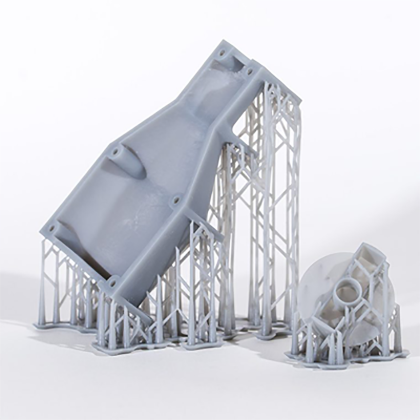In recent years, the manufacturing industry has witnessed a significant transformation with the advent of advanced technologies. One such revolutionary innovation is the evolution of SLA (stereolithography) printing technology, which has redefined the way products are designed and produced. This article delves into the evolution of SLA printing technology and its impact on various industries.

The Emergence of SLA Printing
SLA printing technology has its roots in the 1980s when it was first developed as a rapid prototyping method. The process involves using a UV laser to solidify layers of photopolymer resin, creating precise 3D models with intricate details. Over the years, the technology has evolved to offer enhanced speed, accuracy, and material options, making it a preferred choice for rapid prototyping and low-volume production in industries such as automotive, aerospace, healthcare, and consumer goods.
Advancements in SLA Printing
The evolution of SLA printing technology has been marked by several key advancements. One of the most notable developments is the introduction of high-performance resins that exhibit superior mechanical properties, thermal stability, and biocompatibility. These resins have expanded the application of SLA printing to produce functional end-use parts, tooling, and medical devices, thereby bridging the gap between prototyping and production.
Integration of Industry 4.0
As industries embrace digitalization and automation through Industry 4.0 initiatives, SLA printing technology has seamlessly integrated into smart manufacturing environments. The use of cloud-based software, real-time monitoring, and automated post-processing systems has streamlined the entire production workflow, enabling on-demand manufacturing and customization with minimal human intervention. This convergence of SLA printing with Industry 4.0 principles has unlocked new possibilities for agile and sustainable manufacturing.
The Future of SLA Printing
Looking ahead, the evolution of SLA printing technology is poised to continue, driven by ongoing research and development efforts. Innovations in materials, process optimization, and multi-material printing are expected to further expand the capabilities of SLA technology, enabling the production of complex, multi-functional parts with unprecedented efficiency. Additionally, the integration of AI and machine learning algorithms is anticipated to enhance the predictive maintenance and quality control aspects of SLA printing systems, ensuring consistent and reliable output.
In conclusion, the evolution of SLA printing technology has revolutionized the manufacturing landscape, offering a versatile and efficient means of producing high-quality parts and prototypes. As industries continue to adopt and adapt to the advancements in SLA printing, the potential for innovation and customization in product development is boundless. The journey of exploring the evolution of SLA printing technology in today's industries is an ongoing one, with each milestone paving the way for a future of limitless possibilities.





